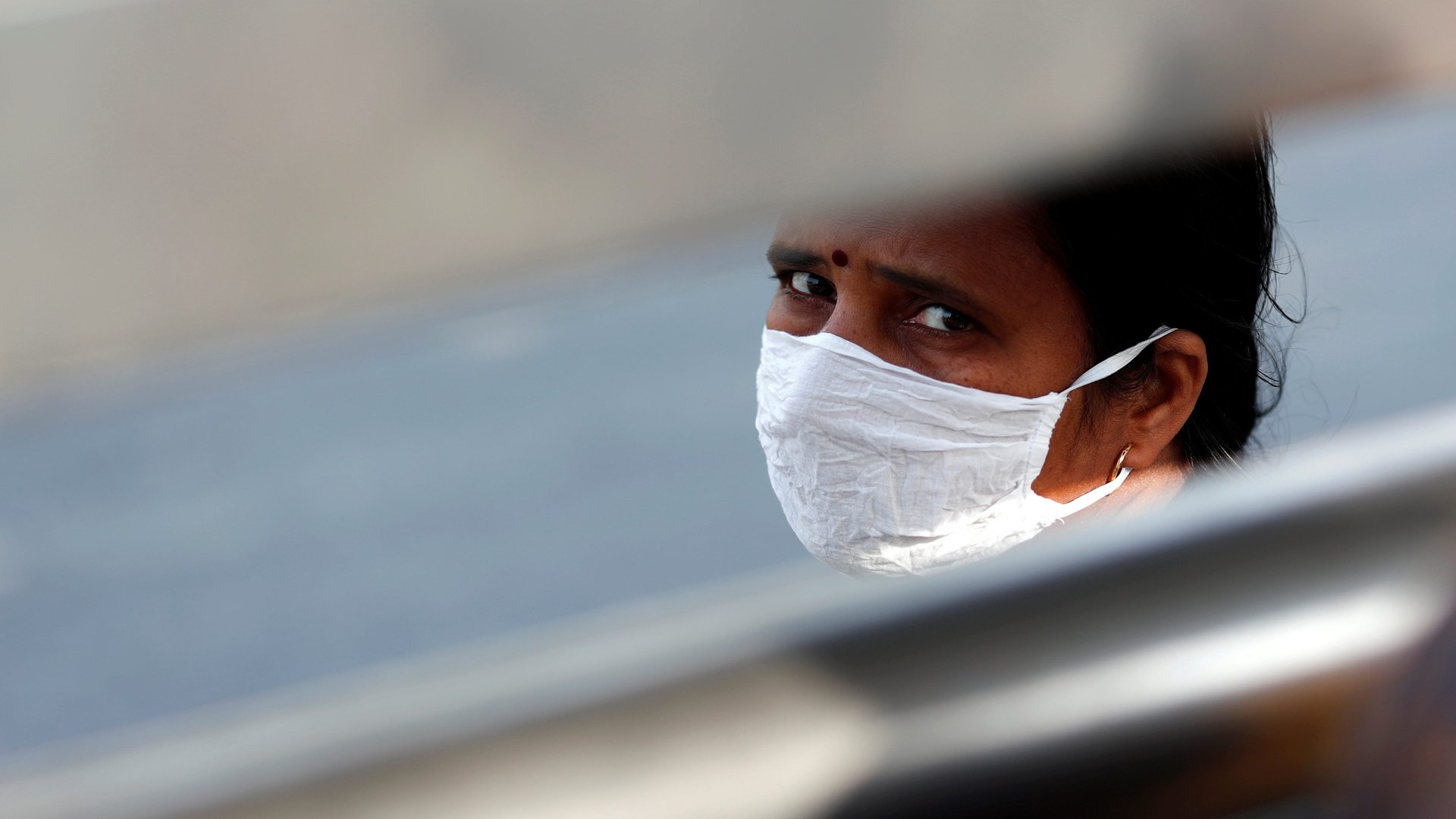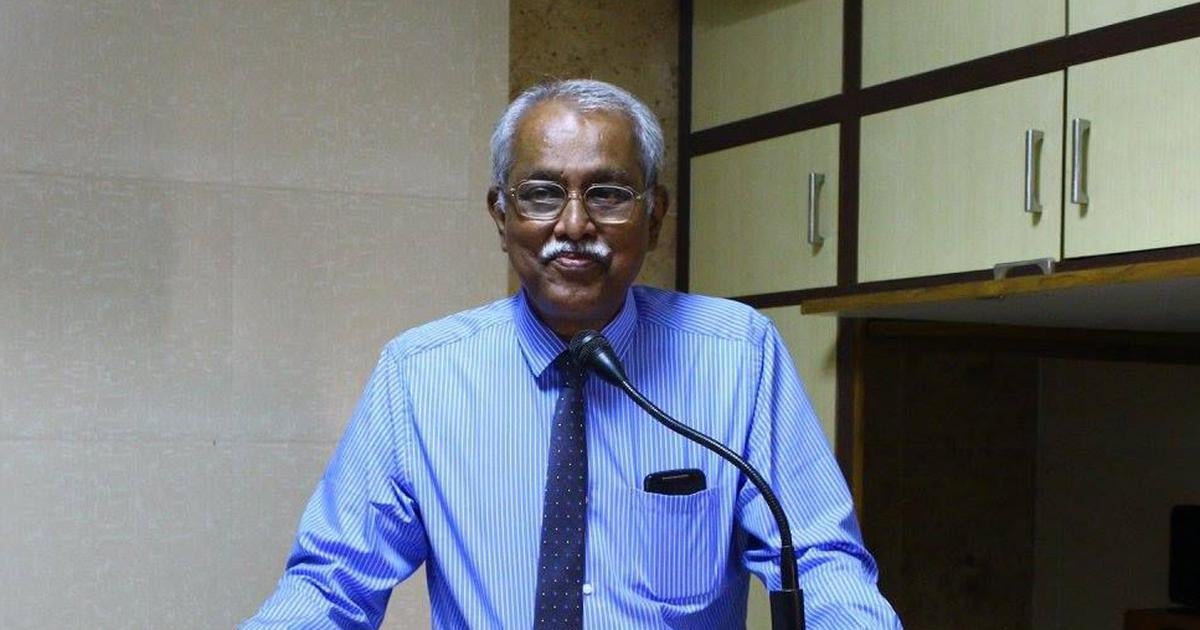Community participation—not lockdowns—is key to fighting coronavirus in India
Jayaprakash Muliyil is one of India’s foremost epidemiologists, with decades of experience in the study of infectious diseases. The former principal of the Christian Medical College in Vellore spoke to Scroll.in about India’s response to the coronavirus outbreak.


Jayaprakash Muliyil is one of India’s foremost epidemiologists, with decades of experience in the study of infectious diseases. The former principal of the Christian Medical College in Vellore spoke to Scroll.in about India’s response to the coronavirus outbreak.
He said the stage of community transmission, when the source of infection for a large number of patients cannot be traced to a confirmed case, has already set in the country, even though the government is reluctant to admit it. He estimates that as much as 55% of India’s population could be infected. Yet, he cautioned against adopting a strategy of “suppression” involving complete lockdowns.
“Suppression is not going to work in India in my opinion,” he said. “In an organised society, where food can be delivered into each house, it is possible, not in India… That is not my response to a public health emergency. Community participation is.”
Edited excerpts:
What lessons can India learn from our past experience with infectious diseases? Most recently, how did the country deal with the H1N1 or swine flu outbreak?
We did little about the H1N1 outbreak, because we could not either stop it or control it. There was nothing that the state or hospitals could do except taking care of patients. So, what the state did was check the temperature of people at the airport. The goal was to prevent H1N1 from coming into India. But it was obvious to everybody else in the world that that is not possible. The comical part was even after the pandemic struck India and the first wave settled down, the government still had men with machines in the airport measuring temperature. We could not do anything as drugs were not working and transmission was so fast. Nothing could be done.
By the time the vaccine came through, the first wave had gone. H1N1 ran its course and settled down on its own—not because we did anything or because of government orders.

What is different this time and why do health experts fear there will be many more infections and deaths before the novel coronavirus runs its course?
First of all, in the case of H1N1, the generation time (time between the infection time of an infected person and the infection time of their infector) was much shorter: less than a day. In the case of the new virus, it is longer: probably around three days.
Second, in the case of H1N1, most infections took place within the first two days (of the virus entering the host) and no infection after the fifth. Covid-19 seems to have a little more infectivity over a longer period of time.
The sub-clinical infection rate (people who are getting infected but not showing manifestations) in H1N1 was 20%. For Covid-19, the best estimate that I have is from China. That is 50 %. So, half the people who get the infection may not even know that they are infected. The million-dollar question is: can they take part in the transmission process? We do not know yet.
Has India done enough so far to contain the outbreak in your opinion?
We did try. But there was a lot of state-to-state difference. Some states did excellently well. They fought it zealously, passionately. Some chose to be very complacent about it.
But none of that matters anymore: we are going to face the epidemic anyway.
What do you think we have not done that we should have?
Let’s begin with what China should have done. It should have restrained the whole infection around the place where it started. Remember that China has good scientists and they could have done it. But it did not happen. This happens in dictatorial societies where free speech is not allowed.
As far as India is concerned, I think we as a country did not move together very fast. I don’t think people at the grassroots level understood the meaning of containment.
See, in a dictionary next to the word mitigate, there is often a small box that says: Don’t confuse with militate. While mitigate has an undercurrent of facilitation, militate is more of a suppressive, authoritarian thing.
In India, as we tried controlling the virus we got into a mode of “catch the fellows coming from abroad, don’t let them out.” That is dangerous because it creates a stigma against the carrier as that is something each one of us is going to get in the future. That was a wrong start. Now, we need a very good leadership to change that attitude.
There has been some criticism about India’s testing strategy—that the government has not tested enough. Do you agree?
I think the problem that the government had at that time was that we had a weak test. It was a test not just for this particular strain, but generally the coronavirus. It would lead to many unnecessary positives and unnecessarily people being quarantined. The government did not really have an option.
The government had to make a choice: test only suspects. When you say suspects, the probability of having the disease is high. So, if such a person tests positive, you can choose what to do with that gut.
But now we have excellent test kits with sensitivity and specificity almost next to 100%. I am sure now the ICMR (Indian Council of Medical Research) and the government of India will start testing, testing, testing.
Several epidemiologists have said that statistically it is unlikely that there is no community transmission yet, though, the government is still to confirm it. What is your opinion?
Community transmission has started. We know this from the fact there have emerged a few cases without any contact or travel history. Now, people have stood up and said that no, it is not an indigenous case. It is easy to say that, but the cost of mistakes at this stage is high. We have to get ready for the next stage.
See, nobody is going to blame (the government) if you can’t hold the disease down in a country like India. It’s fine if it didn’t work, but we have to get ready and figure out how will you (the government) manage if there is a large number of cases.
Internationally, there seems to be a debate about two possible approaches going forward: mitigation vs suppression. While the former involves isolating suspected cases, quarantining households with suspected cases and socially distancing those most vulnerable, at the heart of the latter is a drastic lockdown. Which of these two strategies would you recommend for India?
About 80,000 women will deliver today all over India. They will be looking for a place to go and deliver. Do you know how they travel in the villages? Think of them when there is no auto rickshaw, no bus service. Do we think of them when we give orders?
When people say suppress, suppress, there are people dying in India for all kinds of reasons. Fine you suppress it (the spread of the novel coronavirus) again, but anyway it will come back again.
Suppression is not going to work in India in my opinion. In an organised society, where food can be delivered into each house, it is possible, not in India.
In India, suppression would mean hurting each other, exploitation, giving power to wrong kinds of people. That is not my response to a public health emergency. Community participation is. And community participation and suppression do not go together.
This is going to be a long haul. You have to be sensible about it.
For example, there is no need for everyone who is corona-positive to come to the hospital. Only the subset which has difficulty breathing should. Everybody else should self-discipline and quarantine themselves.
Don’t have any large gatherings, overloading of buses and crowding in general. Maintain social distancing for six to nine months. Basically, slow the virus down.
But if you apply drastic measures, people will rebel if they don’t have food and milk for their children—and health care for other ailments.
What is a reasonable period to keep social distancing measures in place, taking into account India’s socio-economic realities?
The time frame I cannot be specific about since I have not done any modelling, but say six-nine months.
Any ballpark figure on how many dead people that would mean and what percentage of population will be affected?
See, there are unavoidable deaths and then there are avoidable deaths. Avoidable death means pulling off life support, oxygen, etc, to people who are in the ICU because you don’t have enough beds. On the other hand, people with co-morbidities like heart problems, etc, who would anyway die are cases of unavoidable deaths. But we can reduce mortality by bringing down cases of avoidable deaths. That is why we need to make sure there is no overcrowding of hospitals.
As for as infections, I think in the first wave it will be around 55%. That is my conservative estimate. The virus is likely to come back, but we don’t know for sure now.
Why is the fatality rate so drastically different across countries?
There are two ways to calculate mortality. The numerator will be same in both cases: the number of people who have died of the Covid-19.
The denominator can vary. One, it can be diagnosed cases which showed clinical symptoms and were tested positive subsequently as in Italy. On the other hand, is South Korea, that tested aggressively even without symptoms and found many people to be positive.
This article first appeared on Scroll.in. We welcome your comments at [email protected].